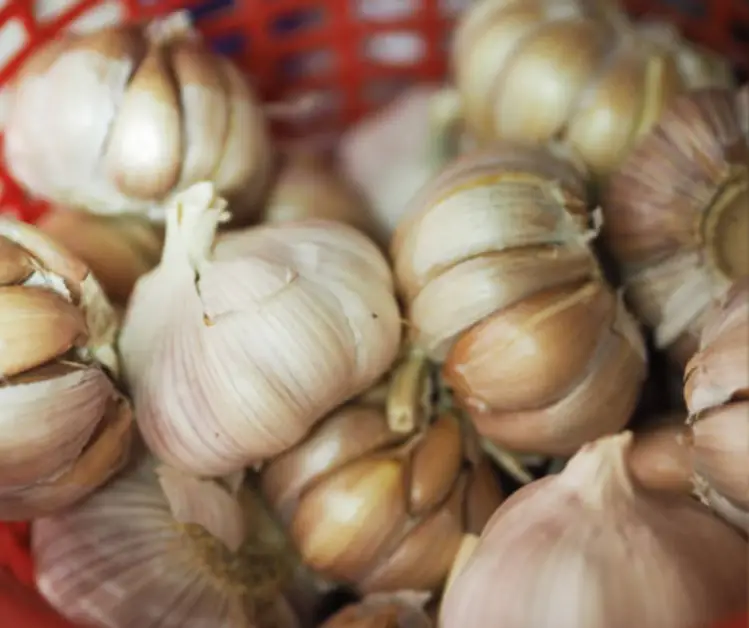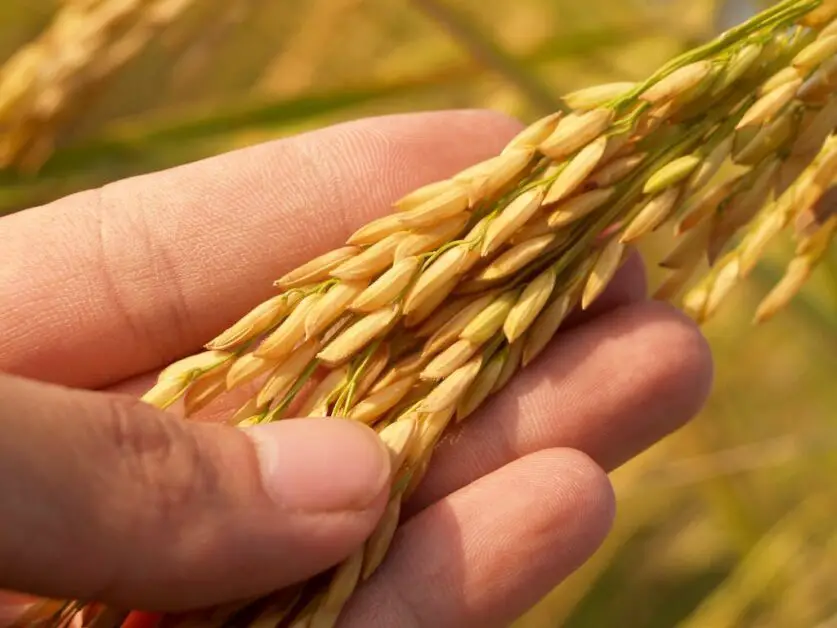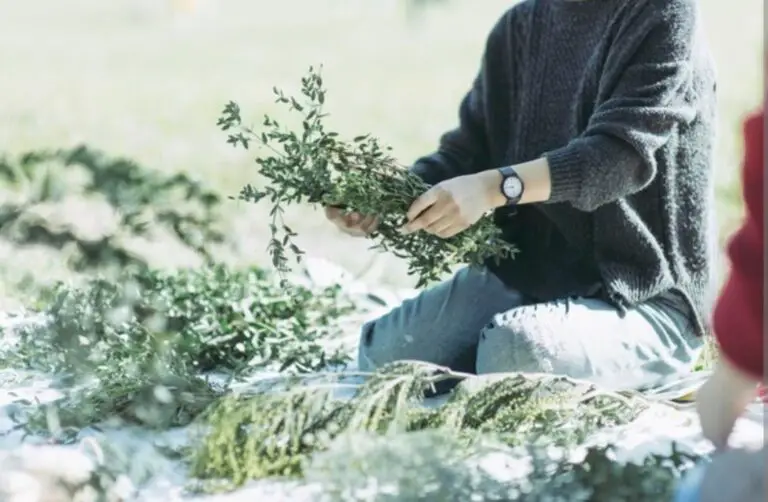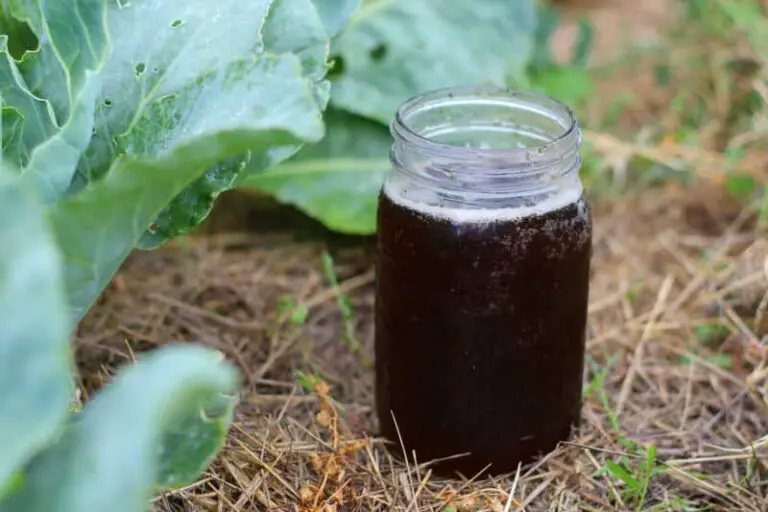6 Different Methods for Storing Garlic
Table of Contents
Properly Drying Garlic for Storage
Drying garlic properly is essential for long-term storage and preserving its flavor. When garlic bulbs are harvested, they contain a high moisture content that, if not removed, can lead to spoilage. To ensure the best results, there are a few key steps to follow.
First, it’s important to harvest your garlic bulbs at the right time. To determine this, observe the lower leaves turning brown and drying up, while the upper leaves are still green. Gently lift the bulbs from the ground, being careful not to damage them.
Once harvested, the garlic bulbs should be gently shaken to remove excess dirt. Avoid washing them, as moisture can promote mold growth during the drying process. Instead, allow the bulbs to air dry in a well-ventilated and shaded area for about two weeks. This will allow the outer skin to dry and become papery, indicating that the garlic is ready for long-term storage.
Utilizing a Garlic Keeper to Preserve Freshness
A garlic keeper is a valuable tool for preserving the freshness of your garlic bulbs. It provides the perfect storage conditions to extend the lifespan of your garlic, ensuring that it remains flavorful and aromatic for longer periods. By keeping the garlic in a garlic keeper, you can protect it from exposure to moisture, which can lead to spoilage and mold growth.
The design of a garlic keeper allows for optimal air circulation, preventing the garlic from becoming damp or developing sprouts. The keeper typically consists of a container with holes or a lid with ventilation slots, ensuring that the garlic receives proper airflow. This helps to maintain the ideal humidity levels, preventing the garlic from becoming overly dry or moist.
Additionally, a garlic keeper keeps garlic bulbs out of direct sunlight, which can cause them to deteriorate quickly. Sunlight can accelerate the aging process, leading to loss of flavor and nutritional value. By storing your garlic in a cool and dark environment, such as a garlic keeper, you can safeguard it from harmful UV rays and maintain its quality.
In summary, utilizing a garlic keeper is an effective method for preserving the freshness of your garlic bulbs. It provides the ideal storage conditions, protecting the garlic from moisture, excessive dryness, and sunlight exposure. By investing in a garlic keeper, you can enjoy the full flavor and aroma of your garlic for an extended period.

Storing Garlic in a Cool and Dark Environment
Garlic is a versatile and widely-used ingredient in many culinary dishes, known for its pungent flavor and numerous health benefits. However, like most fresh produce, garlic has a limited shelf life. To ensure that your garlic remains fresh and flavorful for as long as possible, it is essential to store it in a cool and dark environment.
Storing garlic in a cool and dark environment helps to prolong its shelf life by slowing down the enzymatic reactions that cause deterioration. Garlic bulbs are living organisms, and they continue to respire even after being harvested. Respiration leads to the breakdown of stored carbohydrates and the release of heat and moisture, which can accelerate spoilage. By storing garlic in a cool environment, preferably between 55°F and 65°F (13°C and 18°C), you can slow down the respiration process and extend its freshness.
In addition to cool temperatures, it is also crucial to keep garlic in a dark environment. Exposure to light can cause garlic to sprout prematurely or develop green shoots, resulting in a bitter taste. The presence of light triggers the production of chlorophyll within the garlic cloves, leading to changes in flavor and texture. To prevent this, store your garlic in a cool, dark location, such as a cupboard or pantry, away from direct sunlight. By following these simple storage practices, you can enjoy the full flavor and beneficial properties of garlic for an extended period.
Freezing Garlic for Long-Term Storage
Freezing garlic is a convenient and effective method for long-term storage, allowing you to preserve the fresh flavors of this beloved kitchen staple. The process is simple and can extend the shelf life of garlic for several months.
To freeze garlic, start by peeling and mincing the cloves. You can also opt for slicing or chopping the garlic, depending on your preference. Once the garlic is prepared, transfer it to an airtight container or a freezer bag. Make sure to remove as much air as possible to prevent freezer burn. Label the container with the date to keep track of its freshness. When you’re ready to use the frozen garlic, simply take out the desired amount and thaw it in the refrigerator or use it directly in your recipes. The frozen garlic will retain its flavor and aroma, making it a convenient option for various dishes like soups, stir-fries, and sauces.
By freezing garlic, you can stock up on this versatile ingredient and always have it on hand, even when it’s out of season. Whether you’re a professional chef or a passionate home cook, the convenience and long-lasting freshness of frozen garlic make it a valuable addition to your kitchen. So, the next time you have an abundance of garlic from your garden or a great deal at the store, consider freezing it for long-term storage and enjoy the flavors of this aromatic bulb year-round.
A table summarizing how to freeze garlic for long-term storage:
| Method | Description |
|---|---|
| Whole Garlic Cloves | 1. Separate cloves from the bulb and peel each clove. 2. Remove the brown stem end of the garlic with a paring knife. 3. Scatter the cloves on a parchment or silicone-lined baking sheet in a single layer. 4. Place the baking sheet in the freezer and freeze the garlic until it’s solid (about three hours or overnight). 5. Once fully frozen, funnel the cloves into a zip-top bag, label it, and date it. |
| Minced Garlic or Garlic Paste | 1. Separate cloves from the bulb and peel each clove. 2. If you have a food processor, put all the cloves into the bowl and pulse until the garlic is minced or forms a thick paste. Scrape down the sides to ensure even mincing. 3. Scrape the minced garlic into a bowl. 4. Freeze the minced garlic in ice cube trays or use a teaspoon to scoop portions onto a parchment or silicone-lined baking sheet. 5. Once frozen, transfer the portions to a zip-top bag, label it, and date it. |
How to Use Frozen Garlic:
- Minced garlic can be added directly to your pan from the freezer without defrosting.
- Whole cloves can be used in recipes like garlic-roasted potatoes.
- Create garlic compound butter for steak and roasted veggies.
- Add frozen minced garlic to sautéed veggies, meat for stir-fry, soups, and garlic pasta.
Creating Garlic-infused Oil for Extended Shelf Life
Creating garlic-infused oil is a fantastic way to extend the shelf life of garlic and add a delightful flavor to various culinary creations. The process involves infusing oil with the essence of garlic, resulting in a versatile ingredient that can be used in cooking, dressings, marinades, and more.
To create garlic-infused oil, you will need fresh garlic cloves and a high-quality oil of your choice, such as olive or grapeseed oil. Start by peeling and crushing the garlic cloves to release their aromatic oils. Next, heat the oil in a saucepan over low heat, ensuring it doesn’t reach its smoke point. Add the crushed garlic to the heated oil and let it simmer gently for about 10 minutes. This allows the flavors of the garlic to infuse into the oil. Once done, remove the saucepan from the heat and let the oil cool completely. Strain the oil to remove any garlic solids, ensuring a smooth and flavorful infusion. Finally, transfer the garlic-infused oil to a clean, sterilized bottle or jar and store it in a cool, dark place. With proper storage, your garlic-infused oil can last for several weeks, providing an exquisite touch to your culinary creations.
Pickling Garlic for Added Flavor and Preservation
Pickling garlic is not only a delicious way to enhance its flavor, but it also acts as a fantastic preservative, prolonging its shelf life. The process of pickling involves immersing garlic cloves in a brine solution, typically made with vinegar, salt, and various spices or herbs. This combination not only adds a tangy and flavorful punch to the garlic but also creates an environment that inhibits the growth of bacteria and molds.
When pickling garlic, it is essential to use fresh and firm cloves. Avoid using garlic that has begun to sprout or shows signs of spoilage. Start by peeling the individual cloves and placing them in clean, sterilized glass jars. Next, prepare the brine solution by combining vinegar, water, salt, and desired spices in a saucepan and bringing it to a gentle boil. Once the brine is ready, carefully pour it over the garlic cloves, ensuring they are completely submerged. Seal the jars tightly and store them in a cool, dark place for at least two weeks to allow the flavors to develop.
Pickled garlic can be used in various culinary applications, adding a unique zing to salads, pasta dishes, sandwiches, and more. The tangy and slightly acidic taste of pickled garlic complements a wide range of flavors and can elevate the overall taste profile of your dishes. Additionally, the preservation properties of pickling ensure that you can enjoy the flavor and benefits of garlic well beyond its natural lifespan. So why not try your hand at pickling garlic and unlock a whole new realm of deliciousness?

Using a Dehydrator to Store Garlic Chips or Powder
A dehydrator is an excellent tool for preserving garlic chips or powder, allowing you to enjoy the pungent, flavorful goodness of garlic all year round. Dehydrating garlic removes the moisture and concentrates its flavors, making it a versatile ingredient for various culinary creations.
To begin, thinly slice the garlic cloves or use a garlic press to achieve consistent chip sizes. Then, arrange the slices or pressed garlic cloves on the dehydrator trays, making sure to leave space between them for proper airflow. Set the dehydrator to a low temperature, around 115°F (46°C), and let it run for approximately 8 to 12 hours until the garlic chips become crisp and brittle. The drying time may vary depending on the thickness of the slices and the moisture content of the garlic.
Once the garlic chips are completely dehydrated, you can store them in an airtight container or in a vacuum-sealed bag for long-term use. Alternatively, you can turn the dehydrated garlic chips into a fine powder by grinding them in a spice grinder or using a mortar and pestle. This powdered garlic can be stored in airtight containers and used as a convenient seasoning option in various dishes. Don’t forget to label your containers with the date of dehydration to maintain freshness and ensure you use the oldest batch first.
Storing Garlic in a Mesh Bag for Optimal Air Circulation
One effective method of storing garlic for optimal air circulation is to use a mesh bag. The breathable nature of the mesh allows for proper airflow around the garlic bulbs, preventing moisture buildup and potential spoilage. This method is particularly useful in keeping garlic fresh for an extended period.
When choosing a mesh bag for storing garlic, it is important to select one made from a material that allows air to circulate freely. A mesh bag made from cotton or a similar fabric is ideal for this purpose. Avoid using plastic bags or containers that trap moisture, as they can lead to garlic rot.
To store garlic in a mesh bag, begin by ensuring that the garlic bulbs are fully dry. Excess moisture can promote the growth of mold or fungus, which can cause the garlic to spoil quickly. Once the garlic bulbs are dry, place them inside the mesh bag, ensuring that they are not overcrowded. This allows for proper airflow and helps to prevent bruising or damage to the bulbs. Hang the mesh bag in a cool, dry, and well-ventilated area, such as a pantry or cellar, away from direct sunlight.
By utilizing a mesh bag for storing garlic, you can effectively enhance air circulation, maintain proper humidity levels, and prolong the shelf life of your garlic bulbs. Proper air circulation is crucial in preventing moisture buildup and the growth of mold or mildew, ensuring that your garlic remains fresh and flavorful for an extended period.
Preserving Garlic in Vinegar for Various Culinary Uses
Preserving garlic in vinegar is a popular method for not only prolonging its shelf life but also infusing it with a unique flavor that can be used in various culinary creations. By immersing garlic cloves in vinegar, you create a preserved condiment that can add a tangy kick to salads, marinades, dressings, and more.
To preserve garlic in vinegar, start by peeling and thoroughly cleaning the garlic cloves. Make sure to remove any dirt or debris to avoid contamination. Then, sterilize a glass jar by washing it with hot, soapy water and rinsing it thoroughly.
Next, add the peeled garlic cloves to the jar, making sure to leave some headspace. This will prevent the jar from overflowing as the garlic expands during the preservation process. Once the cloves are in the jar, cover them completely with vinegar, ensuring that all the cloves are submerged.
Choose a vinegar with a mild flavor, such as white wine vinegar or apple cider vinegar, as this will complement the garlic without overpowering it. Seal the jar tightly and store it in a cool, dark place for at least two weeks to allow the flavors to meld and the garlic to fully infuse the vinegar.
After the preservation period, your garlic in vinegar is ready to be enjoyed. The infused vinegar can be used in dressings, marinades, or even as a condiment on its own. The garlic cloves can also be used in cooking, adding a tangy and intense flavor to your dishes. Remember to refrigerate the jar after opening and use within a reasonable timeframe to maintain optimal quality and safety.
A table summarizing how to preserve garlic in vinegar for various culinary uses:
| Method | Description |
|---|---|
| Garlic Vinegar | 1. Peel and crush fresh garlic cloves. 2. Place them in a sterilized glass jar. 3. Heat white or apple cider vinegar until it reaches a simmer. 4. Pour the hot vinegar over the garlic. 5. Seal the jar tightly and let it cool completely. 6. Store in a cool, dark place for at least two weeks. 7. Customize by adding herbs (e.g., rosemary) or spices (e.g., chili flakes). 8. Use it in salad dressings, marinades, or drizzle over dishes for extra flavor. |
| Pickled Garlic | 1. Simmer garlic cloves in vinegar and water for about 10 minutes. 2. Store them in a pickling jar or airtight container. 3. Use pickled garlic as is or dice and add to salads or other dishes. |
| Rosemary-Garlic Vinegar | 1. Transform white wine vinegar into an elegant hostess gift. 2. Combine white wine vinegar, fresh rosemary sprigs, garlic cloves, and small red chilies. 3. Infuse for flavor. 4. Use in marinades or as a dipping sauce. |
Why Use Garlic Vinegar?
- Adds depth and savory flavor to dishes.
- Has antimicrobial properties.
- Supports the immune system.
- Natural remedy for sore throat and colds.
Preparing and Storing Garlic in Salt for Enhanced Flavor
One enjoyable and flavorful way to preserve garlic is by preparing and storing it in salt. Not only does this method enhance the flavor of the garlic, but it also extends its shelf life. To begin, start by peeling the garlic cloves and removing any brown or damaged parts. Next, finely chop or crush the garlic into small pieces. Then, in a clean, dry container, layer a generous amount of coarse sea salt, followed by a layer of the chopped garlic. Continue this layering process until all the garlic is used, making sure to finish with a final layer of salt on top. Seal the container tightly and store it in a cool and dark place.
One of the main benefits of preserving garlic in salt is its enhanced flavor. As the garlic sits in the salt, it absorbs some of its mineral-rich and savory qualities, resulting in a more intense and robust taste. Moreover, the salt acts as a natural preservative, inhibiting the growth of bacteria and prolonging the lifespan of the garlic. This method allows you to enjoy the distinct flavors of garlic throughout the year, even when it’s not in season. So, whether you’re crafting a delicious marinade, adding depth to a stir-fry, or simply seasoning your favorite dish, garlic preserved in salt will surely elevate your culinary creations.
Utilizing a Vacuum Sealer to Extend Garlic’s Shelf Life
Utilizing a vacuum sealer is a highly effective method to extend the shelf life of garlic. When properly sealed, garlic can be stored for an extended period, retaining its flavor and nutritional value. The vacuum sealer creates an airtight environment that prevents the growth of harmful bacteria and fungi, keeping the garlic fresh for longer.
The process of using a vacuum sealer is relatively simple. First, peel and prepare the garlic cloves by removing any dirt or excess skin. Then, place the cloves in a vacuum sealer bag or container designed for use with the sealer. Ensure that the garlic is arranged in a single layer to ensure even sealing.
Next, insert the open end of the bag into the vacuum sealer, following the manufacturer’s instructions. The sealer will remove the air from the bag, creating a tight seal around the garlic. Once the air has been completely removed, the bag is sealed, and the garlic is protected from moisture and oxidation, which can lead to spoilage.
By utilizing a vacuum sealer, gardeners and cooking enthusiasts can prolong the lifespan of their garlic, reducing waste and ensuring a fresh supply of this versatile ingredient. Whether it’s storing harvested garlic from your garden or preserving store-bought bulbs, a vacuum sealer can be an invaluable tool for maintaining the quality and flavor of garlic over an extended period.
Storing Garlic in a Refrigerator for Short-Term Preservation
Storing garlic in a refrigerator can be an effective method for short-term preservation, allowing you to extend its shelf life and retain its freshness. However, it’s important to note that refrigeration can alter the flavor and texture of garlic over time, so this method is best suited for situations where you plan to use the garlic within a few weeks.
When storing garlic in the refrigerator, there are a few key steps to follow. First, ensure that the garlic bulbs are dry and free from any signs of moisture or mold. Any excess moisture can lead to premature spoiling. Next, take a resealable plastic bag or an airtight container and place the garlic inside. It’s recommended to use a paper towel or perforated bags to help absorb any excess moisture and allow for proper air circulation within the container.
It’s important to note that while refrigeration can slow down the sprouting process, it may not completely prevent it. If you notice green sprouts starting to emerge from the garlic cloves, it’s a sign that the garlic is reaching the end of its optimal storage period. At this point, it’s best to use the garlic promptly or consider alternative methods of preservation to ensure its longevity.
Overall, storing garlic in the refrigerator can be a convenient option for short-term preservation. By following the proper storage techniques, you can enjoy the convenience of having garlic readily available while ensuring that it stays fresh for as long as possible.
Creating Garlic Paste for Convenient and Long-Lasting Use
Garlic paste is a convenient and versatile way to add the distinct flavor and aroma of garlic to your culinary creations. Not only does it provide a time-saving solution for busy cooks, but it also offers a long-lasting storage option for preserving the pungent bulbs. Creating garlic paste is a simple process that can be done in the comfort of your own kitchen, allowing you to enjoy the benefits of fresh garlic at your convenience.
To make garlic paste, begin by peeling the cloves and chopping them finely. You can use a knife or a food processor for this step, depending on your personal preference. Once the garlic is chopped, add a pinch of salt to help break down the cloves and create a smooth consistency. Using the flat side of a chef’s knife, press and scrape the garlic against the cutting board to form a paste. Alternatively, you can use a mortar and pestle for this purpose, mashing the garlic until it reaches the desired consistency. The resulting paste can be stored in an airtight container in the refrigerator for up to two weeks, ensuring that you always have a flavorful ingredient on hand for your culinary endeavors.
Whether you’re preparing a savory sauce, marinade, or adding a punch of flavor to your favorite dishes, garlic paste provides a convenient and long-lasting solution. By taking a few minutes to create this versatile ingredient, you can simplify your cooking process while ensuring the freshness and potency of your garlic. So, next time you’re in the kitchen, why not whip up a batch of homemade garlic paste and enjoy the delicious flavor it brings to your meals?
• Garlic paste is a convenient and versatile way to add the distinct flavor and aroma of garlic to your culinary creations.
• It provides a time-saving solution for busy cooks.
• It offers a long-lasting storage option for preserving garlic bulbs.
• Creating garlic paste is a simple process that can be done in the comfort of your own kitchen.
• To make garlic paste, begin by peeling the cloves and chopping them finely using a knife or food processor.
• Add a pinch of salt to help break down the cloves and create a smooth consistency.
• Use the flat side of a chef’s knife or mortar and pestle to press and scrape the garlic against the cutting board until it forms a paste.
• The resulting paste can be stored in an airtight container in the refrigerator for up to two weeks.
• Garlic paste is perfect for preparing savory sauces, marinades, or adding flavor to dishes.
• By making homemade garlic paste, you can simplify your cooking process while ensuring freshness and potency.

Storing Garlic in an Airtight Container to Prevent Moisture
Storing garlic in an airtight container is a crucial step in preventing moisture and prolonging its shelf life. Garlic has a high moisture content, and when exposed to moisture, it can easily spoil or develop mold. By placing garlic bulbs or cloves in an airtight container, you create a barrier that prevents moisture from entering and damaging the garlic.
When selecting an airtight container for garlic storage, opt for glass or food-grade plastic containers with secure seals. These materials are non-reactive and won’t impart any unwanted flavors or odors to the garlic. Additionally, the airtight seal ensures that no moisture or air can seep into the container, keeping the garlic dry and fresh.
To store garlic in an airtight container, ensure that it is clean and completely dry. Any moisture on the bulbs or cloves can lead to spoilage. Place the garlic in the container without overcrowding, allowing enough space for air circulation. Store the container in a cool, dark location, such as a pantry or cupboard, as exposure to heat and light can also degrade the quality of garlic.
By properly storing garlic in an airtight container, you can extend its shelf life and always have flavorful cloves at hand for your culinary endeavors.
Preserving Garlic by Canning in Oil or Vinegar
Preserving garlic by canning in oil or vinegar is a popular method to extend its shelf life and enhance its flavor. The process involves immersing peeled garlic cloves in either oil or vinegar and then sealing them in a jar, making them ready to be used in various recipes.
One of the benefits of canning garlic in oil is that the oil acts as a preservative, keeping bacteria and other microorganisms at bay. However, it is crucial to ensure that the garlic is completely submerged in oil to prevent the growth of botulism-causing bacteria, which thrive in low-oxygen environments. Additionally, it is essential to store the jar in a cool and dark place to maintain the quality of the garlic and prevent spoilage.
On the other hand, canning garlic in vinegar is another excellent method for preservation. Vinegar helps to inhibit bacterial growth and adds a tangy flavor to the garlic. It is important to note that the acidity of the vinegar plays a vital role in preserving the garlic, so it is recommended to use vinegar with a minimum acidity level of 5 percent. This method allows the garlic to infuse with the vinegar, creating a flavorful condiment that can be used in dressings, marinades, and various culinary creations.
Overall, canning garlic in oil or vinegar provides a convenient and effective way to store and enjoy garlic for an extended period. However, it is essential to follow proper canning techniques and adhere to food safety guidelines to ensure the preservation of both flavor and freshness.
Utilizing a Garlic Roaster for Easy Storage and Cooking
A garlic roaster is a valuable tool that can simplify the process of storing and cooking garlic. By utilizing a garlic roaster, you can easily preserve the freshness of your garlic bulbs while enhancing their flavor.
The roaster works by enclosing the garlic bulbs in a small ceramic container, allowing them to roast slowly and evenly. As the garlic cloves heat up, their natural sugars caramelize, resulting in a rich and mellow flavor. Additionally, roasting garlic reduces its pungency, making it more versatile and palatable in different recipes.
Not only does a garlic roaster enhance the taste of garlic, but it also makes storage a breeze. Once roasted, the garlic cloves can be easily removed from their skins and stored in an airtight container. This method ensures that your garlic remains fresh for an extended period, allowing you to enjoy the flavor and health benefits of garlic whenever you need it.
With a garlic roaster at your disposal, you can explore a multitude of culinary possibilities. Whether you’re adding roasted garlic to spreads, sauces, or roasted vegetables, this versatile ingredient is sure to elevate your dishes. Harness the simplicity and convenience of a garlic roaster to enhance your cooking and ensure that your garlic is stored properly for future use.
What is a garlic roaster and how does it work?
A garlic roaster is a kitchen tool specifically designed to roast garlic bulbs. It typically consists of a ceramic or clay container with a lid and a small vent. The roaster works by evenly distributing heat around the garlic bulb, resulting in a soft and flavorful roasted garlic.
Can a garlic roaster be used for storage purposes?
No, a garlic roaster is primarily used for cooking garlic, not for long-term storage. However, roasted garlic can be stored in an airtight container in the refrigerator for a few days.
How does roasting garlic affect its flavor?
Roasting garlic enhances its flavor by mellowing its pungency and bringing out its natural sweetness. The heat breaks down the garlic’s sulfur compounds, resulting in a smoother, nuttier, and sweeter taste.
Can a garlic roaster be used with other vegetables?
While a garlic roaster is specifically designed for roasting garlic, it can also be used to roast other small vegetables like onions or shallots. The cooking time may vary depending on the vegetable.
What are the benefits of using a garlic roaster?
Using a garlic roaster provides a convenient and fuss-free way to roast garlic. It helps to bring out the best flavors in garlic, making it a versatile ingredient for various dishes. Additionally, roasting garlic can have health benefits, including potential antioxidant and anti-inflammatory properties.
Can a garlic roaster be used in the oven?
Yes, a garlic roaster can be used in the oven. Simply place the garlic bulb in the roaster, cover it with the lid, and bake it in the oven at a recommended temperature until the garlic cloves are soft and golden.
Are there any special care instructions for a garlic roaster?
To ensure the longevity of your garlic roaster, it is recommended to hand wash it with mild soap and warm water. Avoid using abrasive cleaners or harsh chemicals that may damage the surface of the roaster.







